Your Ultimate Guide to Growing Pineapples (and Picking a Perfect One)
I’ve spent a lot of time around plants, and one of the first things I love to ask people is where they think pineapples come from. Nine times out of ten, the answer is a tree. It’s a super common myth, but the truth is way cooler.
In this article
- So, What Exactly IS a Pineapple Plant?
- Growing at Home vs. How the Pros Do It
- Let’s Plant a Pineapple Crown: A Step-by-Step Guide
- Caring for Your Plant (and Common Problems)
- The Secret to Making Your Pineapple Flower
- The Art of Picking the Perfect Pineapple
- How to Cut a Pineapple Like a Pro
- What’s That Tingle? A Quick Word on Bromelain
- A Few Last Words of Advice
- My Favorite Ways to Use Pineapple
- Inspirational Gallery
Honestly, seeing someone’s face when I show them a low, spiky plant with a single, incredible fruit growing right out of the middle never gets old. That little moment of surprise is where the real journey to understanding this amazing fruit begins.
Pineapples aren’t a quick crop; they teach you a thing or two about patience and the slow, steady rhythm of nature. This guide is basically everything I’ve learned from getting my hands dirty over the years. We’re going to skip the marketing fluff and get right into the good stuff—how to grow your own and how to pick the absolute best one at the store.
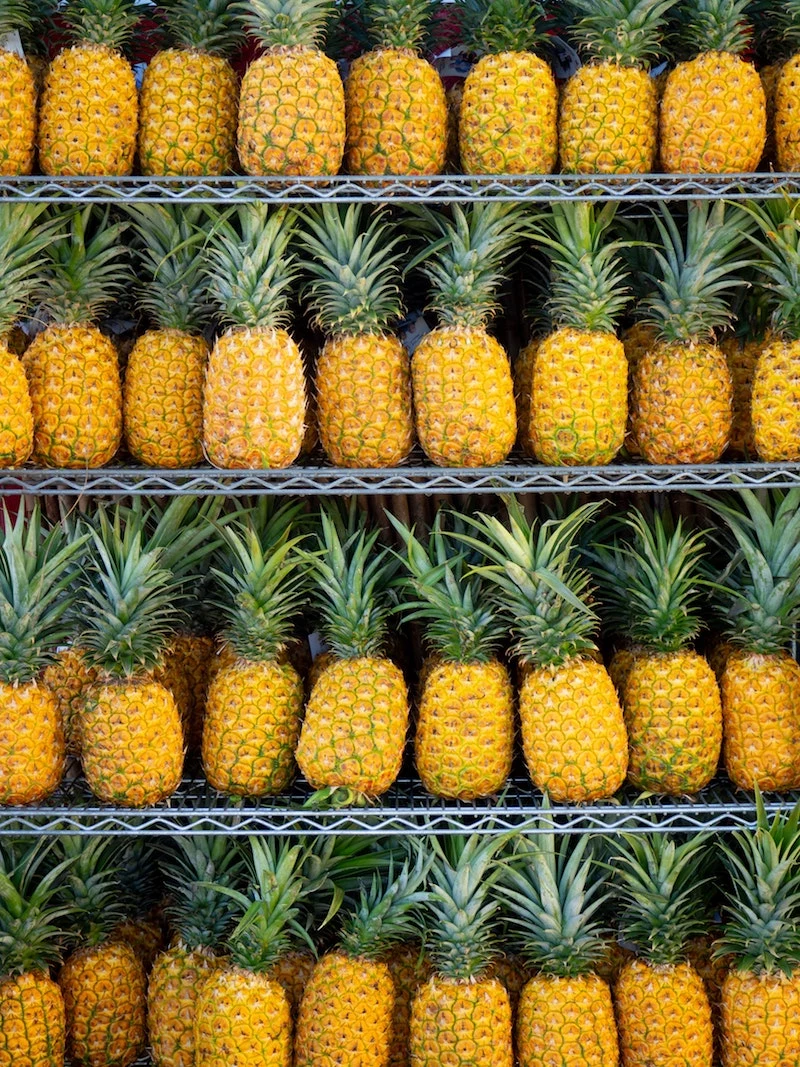
So, What Exactly IS a Pineapple Plant?
To really get pineapples, you have to understand the plant itself. It’s not a tree or a bush, but something called a terrestrial bromeliad. Think of it as a cousin to those cool air plants you see hanging on wood, except this one grows in the dirt. This family connection is the secret to a lot of its quirky habits.
The plant is basically a rosette of tough, waxy leaves spiraling around a thick stem. And those leaves are smart; they’re perfectly designed to funnel water and nutrients right down to the base. From my own experience, I’ve seen healthy pineapple plants catch morning dew this way, a clever survival trick from their tropical homeland.
But here’s the most fascinating part. Pineapples use a special kind of photosynthesis. Most plants open their pores during the day to breathe in carbon dioxide, but they lose a ton of water in the process. Pineapples are way more efficient. They keep their pores shut tight during the hot day to save water. Then, at night, they open up to collect CO2 and store it. When the sun rises, they use that stored gas to make energy. It’s an incredible adaptation that lets them thrive in hot, sunny spots.
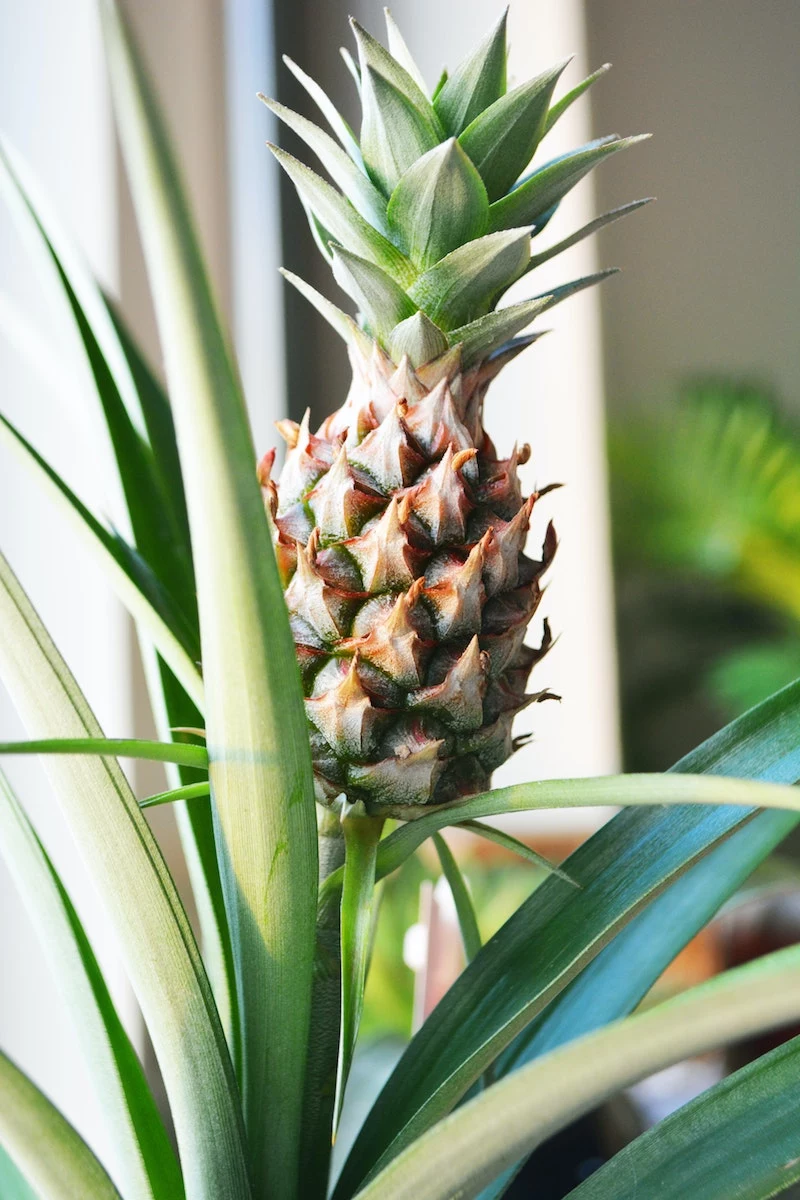
The fruit itself is a botanical marvel. It’s not one single fruit, but a bunch of smaller fruits—up to 200 of them—that have fused together. The plant sends up a stalk with hundreds of individual flowers. Over a few months, each little flower becomes a berry, and they all merge around the central core. Those diamond-shaped “eyes” on the skin? Each one is a ghost of a single flower. Pretty cool, right?
Oh yeah, you might wonder why you never find seeds in them. That’s on purpose. Commercial varieties are grown so they can’t pollinate themselves, and farmers work hard to keep hummingbirds (the main pollinators) away. A seedy pineapple is just not as good to eat, so a seedless one is a sign of good quality control.
Growing at Home vs. How the Pros Do It
On a commercial farm, time is money. While you can totally grow a pineapple from the top of a store-bought fruit, it’s the scenic route—we’re talking 24 to 30 months for one pineapple. Pros can’t wait that long, so they use other parts of the plant to speed things up.
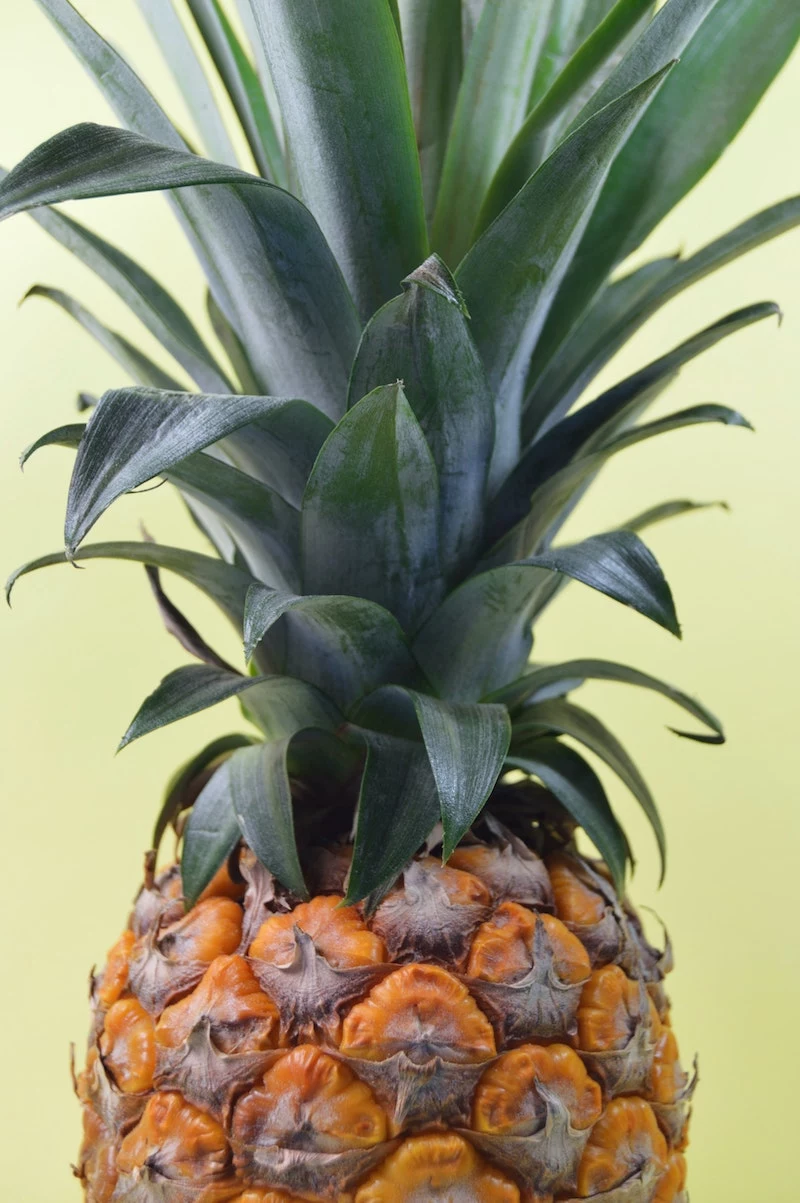
Here’s the deal on how they propagate:
- Suckers: These are little baby plants that sprout from the base of the mother plant. They’re the fastest option, giving you fruit in about 15 to 18 months.
- Slips: These grow from the fruit stalk, right under the pineapple. They’re the second-best choice, fruiting in around 20 months.
- Crowns: And then there’s the leafy top of the fruit. It’s the slowest method but, hey, it’s basically free and incredibly rewarding for anyone trying this at home.
Growing from a crown is a fantastic project and a great lesson in patience. Here’s the tried-and-true method I always recommend.
Let’s Plant a Pineapple Crown: A Step-by-Step Guide
Alright, before you even start, here’s your simple shopping list. You’ll need one healthy pineapple, an 8-inch pot (terracotta is great for drainage), a bag of standard potting soil, and a small bag of perlite. All in, you’re probably looking at around $25 for a project that will last for years. Not bad!
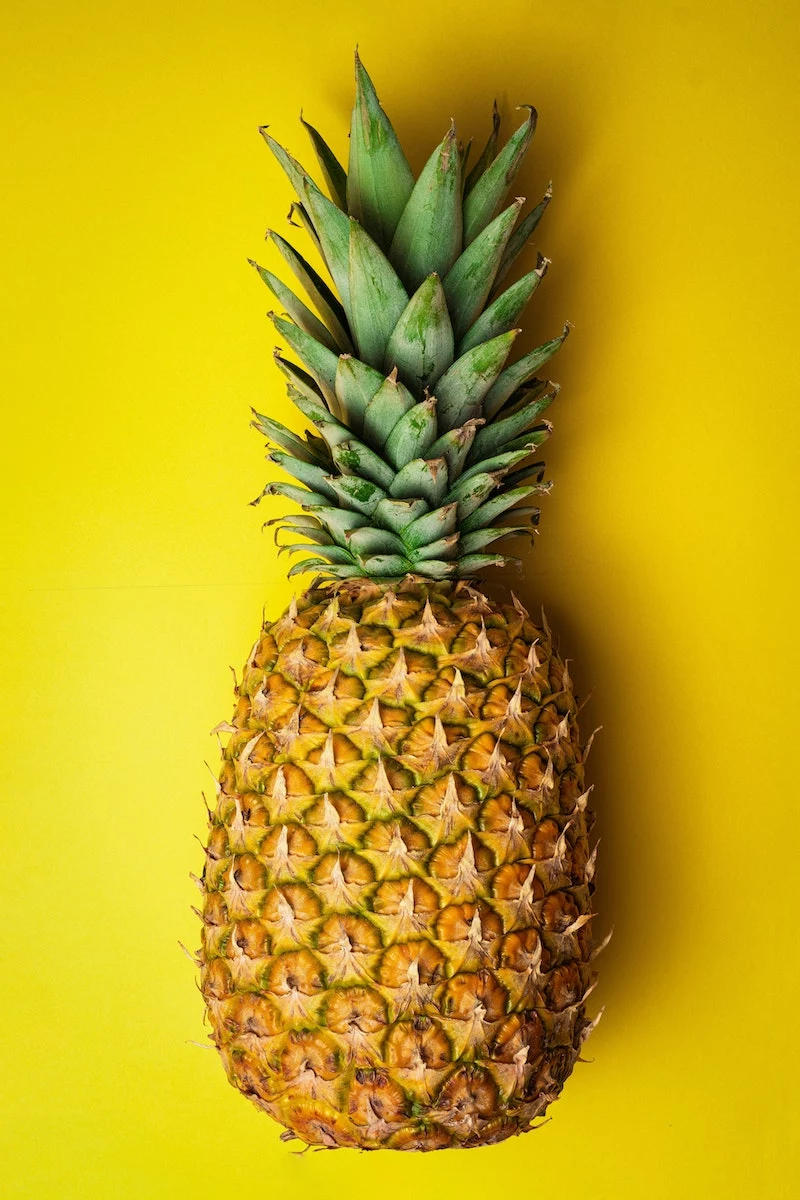
- Pick a Good Crown: Start with a pineapple that has green, firm leaves. Avoid anything with yellow, dried-out leaves.
- Remove the Crown: Don’t cut it! Grip the pineapple body in one hand and the base of the leafy crown with the other. Give it a sharp, firm twist. It should pop right off.
- Prep for Planting: Peel off the bottom few layers of tiny leaves to expose about an inch of the stalk. You should see little brown bumps—those are the beginnings of your future roots.
- Cure the Crown (Don’t Skip This!): This is the step everyone misses. Place the crown upside down in a dry spot with good air circulation for about three to five days. This lets the cut end dry out and form a callus. If you plant a wet crown, it will almost certainly rot. I learned this the hard way and lost a whole batch of them once.
- Time to Plant: Grab that 8-inch pot. Pineapples hate having “wet feet,” so drainage is key. I like to use a mix of one part potting soil, one part perlite, and one part peat moss or coco coir. It makes the soil light and well-draining. Plant the crown just deep enough to cover the exposed stalk, and water it well once, letting all the excess drain out.
Now, just put your new plant in a bright, sunny window. And be patient… it can take a couple of months for the roots to really take hold. You’ll know it’s working when you see tiny new leaves sprouting from the very center.
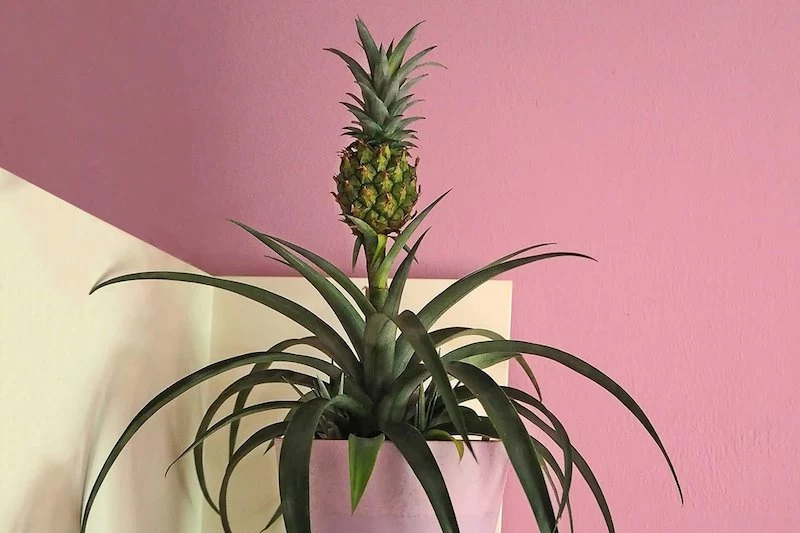
Caring for Your Plant (and Common Problems)
So, you’ve planted your crown. Now what? After that first big watering, let the top inch or two of soil dry out completely before you water again. Overwatering is the #1 killer of homegrown pineapples.
A common question I get is about feeding them. After about three months, once your plant is established, it’s a good idea to start fertilizing. They aren’t super heavy feeders, but a little food goes a long way over a two-year journey. I use a balanced liquid houseplant fertilizer, diluted to half-strength, about once every couple of months during the spring and summer. Just back off in the winter.
Heads up! You might run into a few issues:
- Brown Leaf Tips: This usually means the air is too dry or you’re not watering consistently. It’s rarely a major problem.
- The Crown Rots: If the base turns mushy, you probably skipped the curing step or the soil is too wet. Sadly, you’ll have to start over if this happens.
- Pests: Keep an eye out for mealybugs, which look like little bits of white cotton. If you see any, just dip a cotton swab in rubbing alcohol and dab them off. Easy fix!
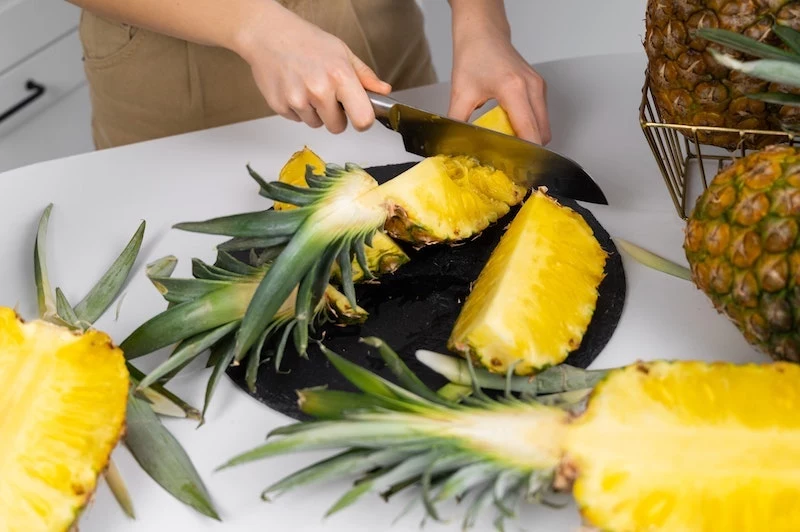
The Secret to Making Your Pineapple Flower
Okay, so it’s been nearly two years, your plant is huge, but there’s no fruit. This is super common and frustrating! The good news is that you can give it a little nudge. The pros use a chemical that releases a natural plant hormone to trigger blooming, but you can do the same thing at home with an apple.
Here’s the trick:
- Make sure your plant is mature—it should be at least 18 months old with 30-40 healthy leaves.
- Cut a ripe apple in half. Ripe apples (and bananas, by the way) release a gas that tells bromeliads it’s time to flower.
- Place the apple halves on the soil near the base of the plant.
- Cover the entire plant and pot with a large, clear plastic bag to trap the gas. If the apple gets a little moldy after a few days, don’t worry, just swap it for a fresh piece.
- Leave the bag on for about a week, but keep the plant out of direct sun, or you’ll scorch the leaves.
- After a week, remove the bag and the apple and wait.
If the plant is ready, you should see a tiny reddish-pink bud emerging from the center within six to ten weeks. That’s your pineapple!
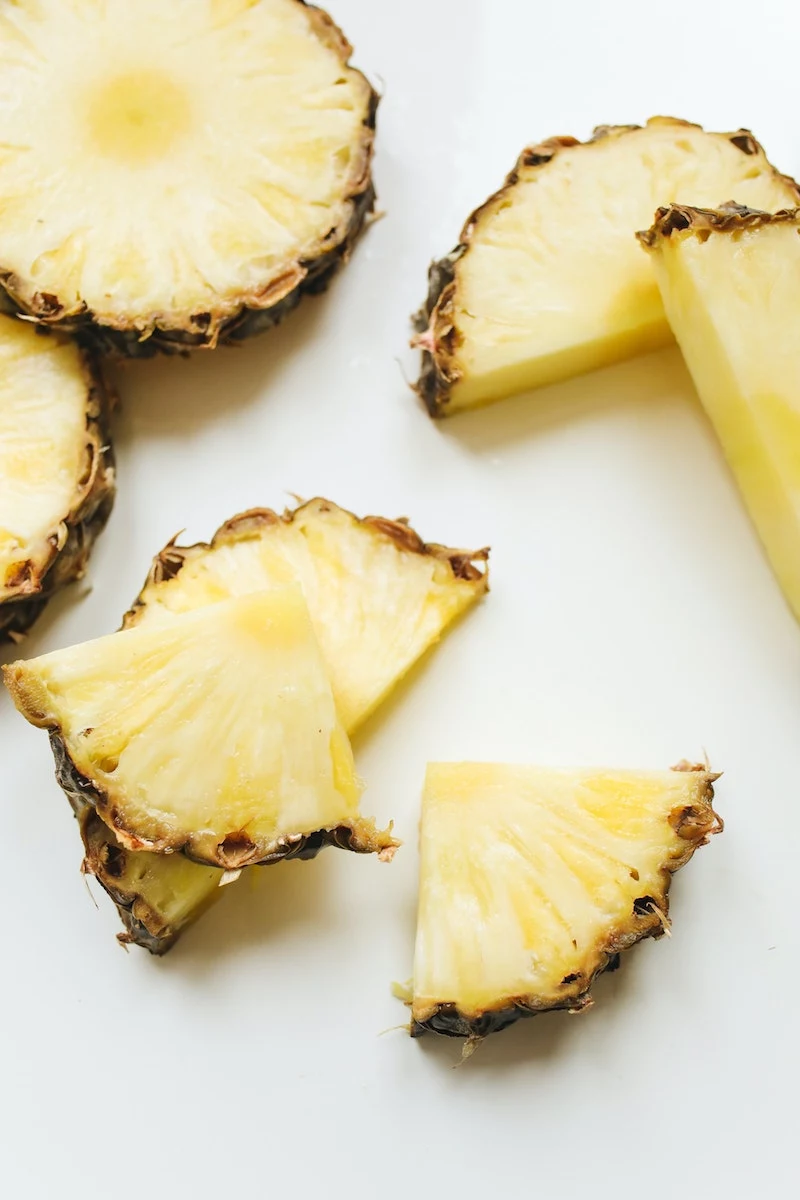
The Art of Picking the Perfect Pineapple
Staring at a mountain of pineapples in the grocery store can be overwhelming. Forget the old myths and use your senses. This is how the pros do it.
1. Judge by Weight, Not Size. Pick up a few pineapples that are about the same size. The one that feels heaviest is almost always the juiciest. A light fruit is often a dry fruit.
2. Use Your Nose. This is the most reliable trick in the book. Flip the pineapple over and smell the base. It should have a sweet, fragrant aroma. If it smells sour or like vinegar, it’s overripe. No smell at all? It was picked too early and will never get sweet—it will only get softer.
3. Check the “Eyes.” The diamond-shaped segments on the skin should be fairly flat and well-developed. The color should be a consistent golden-yellow, although some modern varieties are ripe even when they’re still a bit green. Look for uniform color.
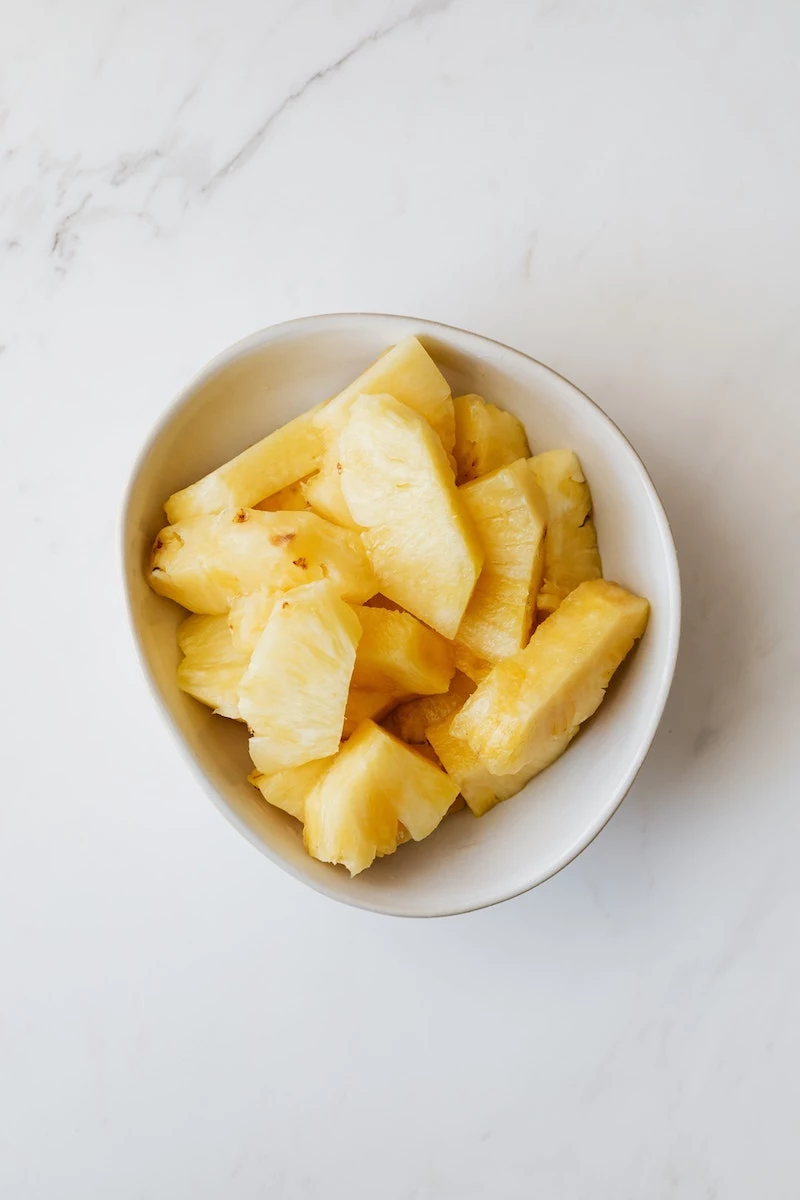
4. Give It a Gentle Squeeze. It should have a slight give, but still feel firm. If it’s rock-hard, it’s not ready. If it’s soft or has mushy spots, leave it.
5. Ignore the Leaf-Plucking Myth. People say you can tell if it’s ripe by pulling a leaf from the center. To be frank, this is not reliable. An easily plucked leaf can just mean the plant is dehydrated. Trust your nose instead!
How to Cut a Pineapple Like a Pro
Butchering a pineapple seems like a chore, but there’s a quick way to do it that minimizes waste.
- Top and Tail It: Lay the pineapple on its side and use a big, sharp knife to slice off the crown and about a half-inch from the base. Now you have two flat ends.
- Peel the Skin: Stand it up on one end. Slice downwards, following the curve of the fruit, to remove the skin in strips.
- Remove the Eyes (The Pro Move): You’ll see the leftover brown eyes are arranged in diagonal lines. Instead of digging each one out, make shallow, V-shaped cuts in a spiral, following those lines. You’ll create a cool spiral pattern and remove all the eyes with almost no waste.
- Core It: Now you can slice it into rounds and use a small cookie cutter to punch out the tough core. Or, quarter it lengthwise and slice the core off each piece.
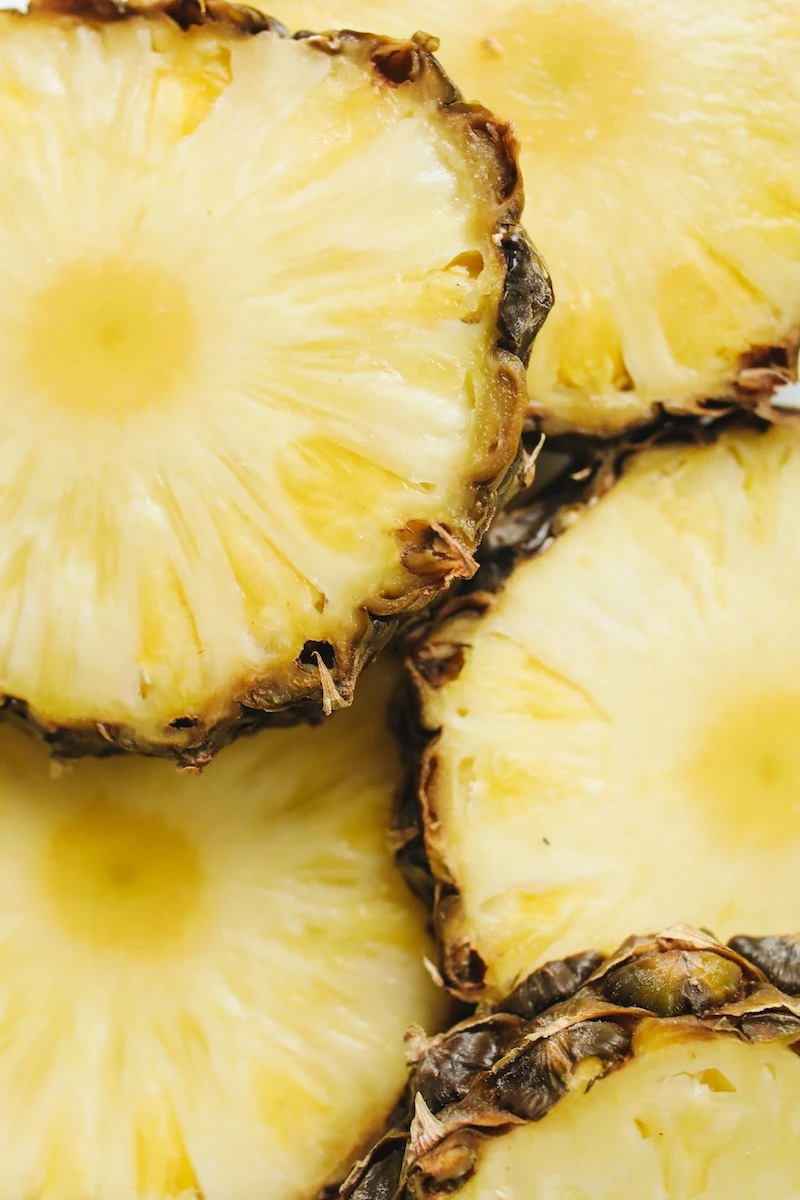
What’s That Tingle? A Quick Word on Bromelain
Ever get a tingly feeling in your mouth after eating fresh pineapple? That’s from an enzyme called bromelain. It breaks down proteins, which is why pineapple is a great meat tenderizer. That tingle is literally the enzyme starting to break down the proteins in your mouth! It’s harmless, but a few kitchen tips are good to know:
- No Fresh Pineapple in Jell-O: The bromelain will destroy the gelatin, and it will never set. I’ve seen this happen! Canned pineapple works because the heat deactivates the enzyme.
- Careful with Dairy: If you mix fresh pineapple into cottage cheese or yogurt and let it sit, it can get bitter and watery. Best to mix it right before you eat.
A Few Last Words of Advice
The leaves on a pineapple plant can be surprisingly sharp. When I’m working with them, I always wear gloves and long sleeves to avoid getting covered in tiny, annoying scratches. Just be mindful when you’re handling your plant.
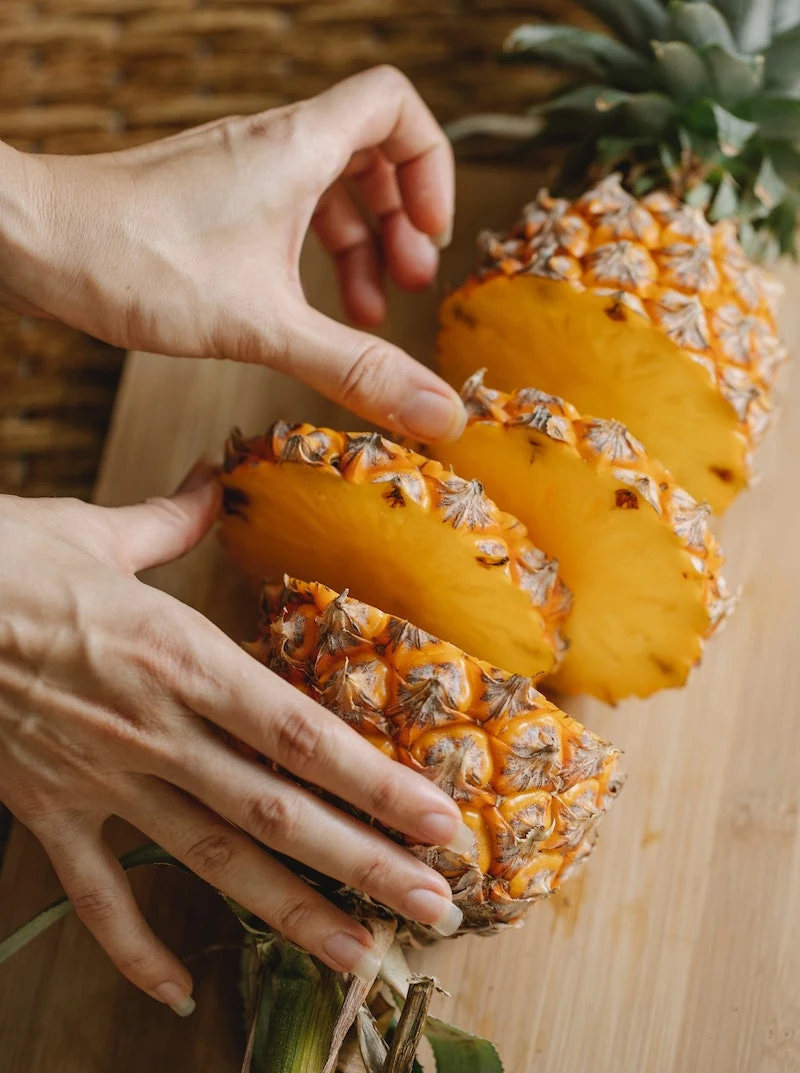
And remember, if you decide to grow your own, you’re signing up for a two-year commitment for a single fruit. It’s an amazing experience, but it requires dedication. Your turn! Try this at home and see if you can get a fruit in two years. It’s a project you won’t forget.
My Favorite Ways to Use Pineapple
Instead of just any old recipe, here are two that truly respect the fruit.
1. No-Waste Fermented Pineapple Brew (Tepache)
This is a traditional Mexican drink that uses the peel and core, so nothing goes to waste. It’s fizzy, refreshing, and full of probiotics.
- You’ll Need: The peel and core from one pineapple, 1/2 cup of brown sugar, one cinnamon stick, a few cloves, and about 2 quarts of filtered water.
- How to Make It: Rinse the pineapple well before you peel it. In a big glass jar, combine the peel, core, sugar, spices, and water. Stir to dissolve the sugar. Cover the jar with a cloth and let it sit at room temperature for 1-3 days, tasting it daily. When it’s got a sweet-tart fizz you like, strain it into bottles and pop them in the fridge. Quick tip:
Inspirational Gallery


Long before it became a pizza topping, the pineapple was a powerful status symbol. In 18th-century Europe, this exotic import was so rare and expensive that hosts would rent one for an evening just to display it as a centerpiece at a party. It was the ultimate sign of wealth and hospitality, a tradition that subtly continues today with pineapple motifs in home decor.
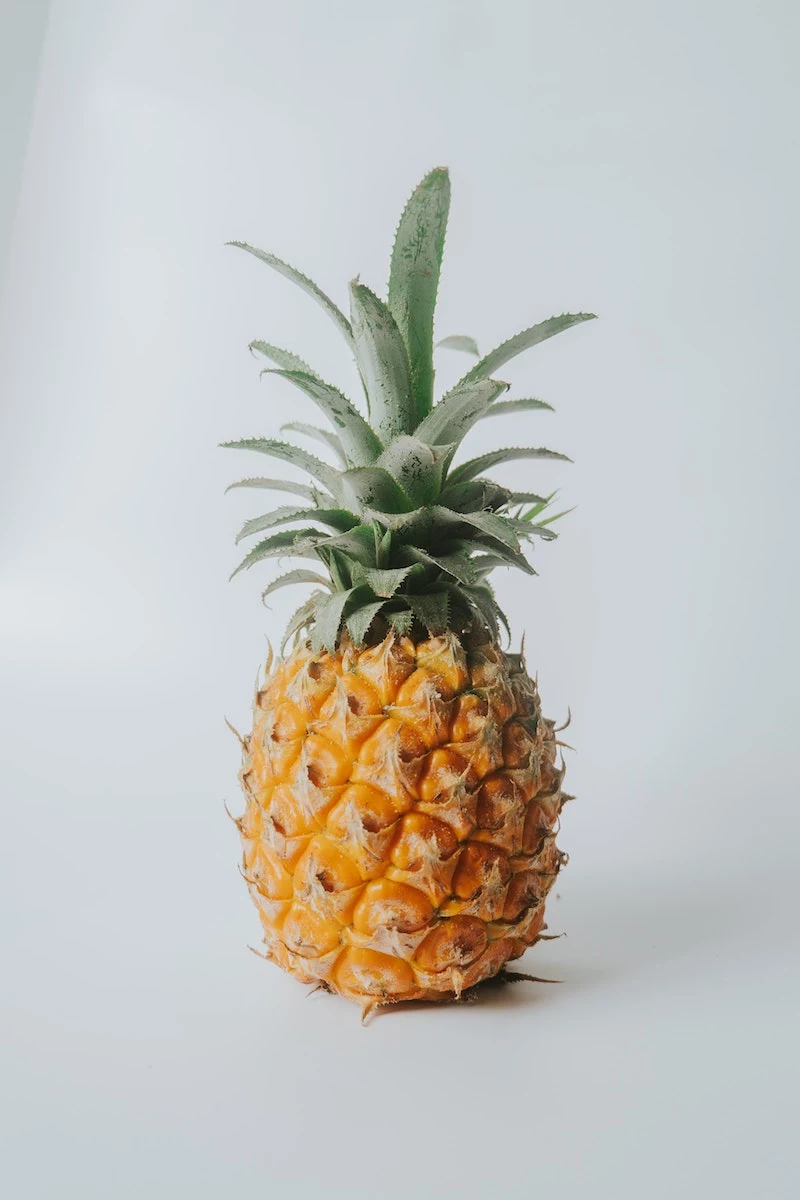
Ever feel a tingle in your mouth after eating a lot of fresh pineapple? That’s bromelain, a powerful enzyme mixture that breaks down proteins. It’s so effective that workers on pineapple plantations sometimes lose their fingerprints!
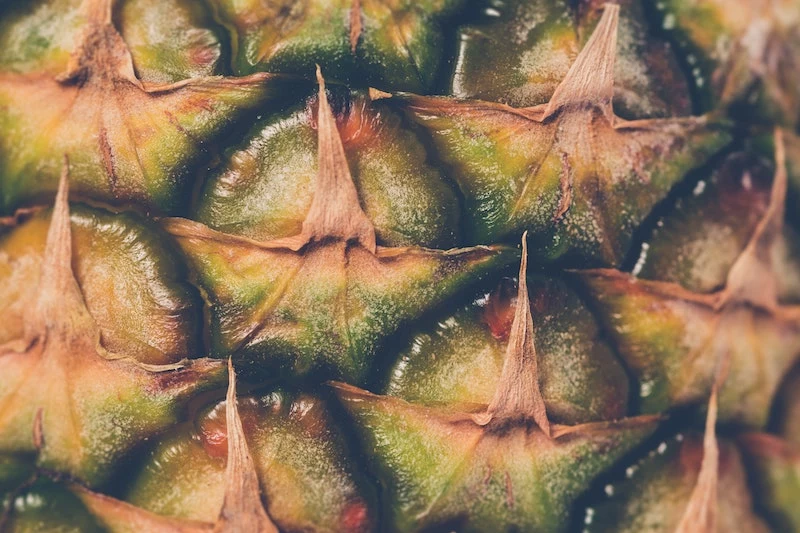
Can you actually ripen a hard, green pineapple on your kitchen counter?
The short answer is no. Unlike bananas, pineapples do not ripen further after being picked. They will get softer and juicier, but not sweeter. The sugar content is locked in the moment they are harvested. That’s why choosing a ripe one at the store is so critical—what you buy is as sweet as it will ever get.

Don’t toss the scraps! The tough skin and core are packed with flavor and that beneficial bromelain enzyme. Here’s how to use them:
- Pineapple Tea: Simmer the skin and core in water with ginger and a cinnamon stick for a soothing, anti-inflammatory drink.
- Infused Vinegar: Submerge the scraps in white vinegar for two weeks, then strain. You’ll have a fantastic tropical vinaigrette base.
- Tepache: Make this traditional Mexican fermented drink by combining the rind with piloncillo sugar and water in a jar for a few days.
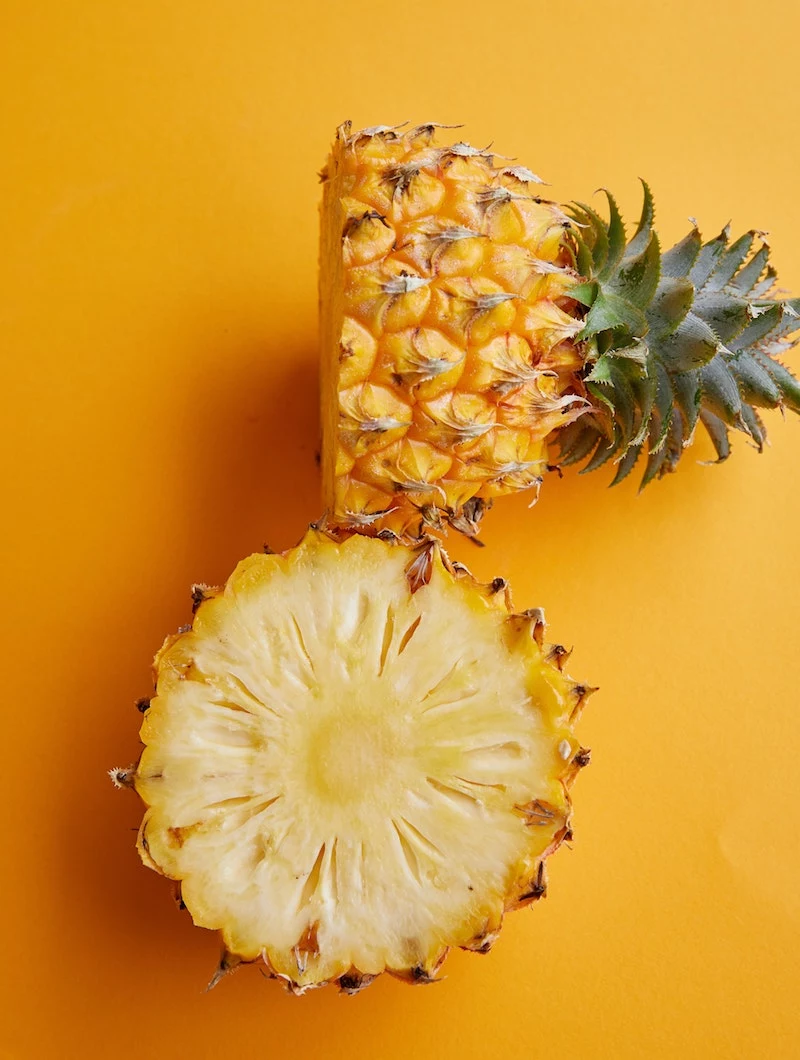
The ‘Pinkglow’ pineapple, sold by Del Monte, isn’t a fantasy. It’s a patented fruit genetically modified to produce lower levels of the enzymes that convert pink lycopene (the pigment in tomatoes) into yellow beta carotene.
This means it stays naturally pink and is often described as less acidic and extra sweet. It’s a fascinating example of how modern agriculture can alter the look and taste of a classic fruit, creating a whole new tasting experience.
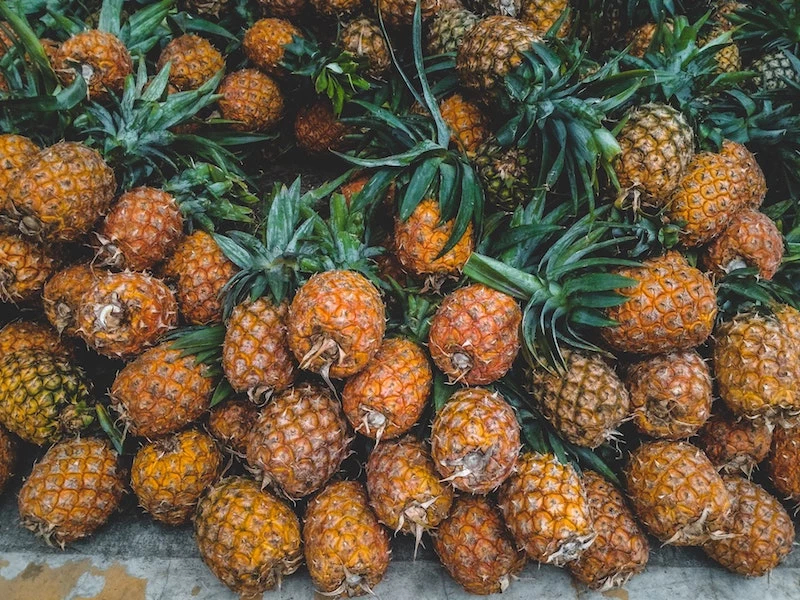
Classic Corer/Slicer: This gadget cores and creates perfect rings in one swift motion. Brands like OXO make popular models. It’s fast and minimizes waste, but can be a bit bulky to store.
Just a Sharp Knife: The traditional method offers more control. You can cut spears, chunks, or rings of any thickness. It requires more skill to remove the core and ‘eyes’ efficiently but requires no special tools.
For speed and consistency, the corer wins. For versatility, a good chef’s knife is unbeatable.
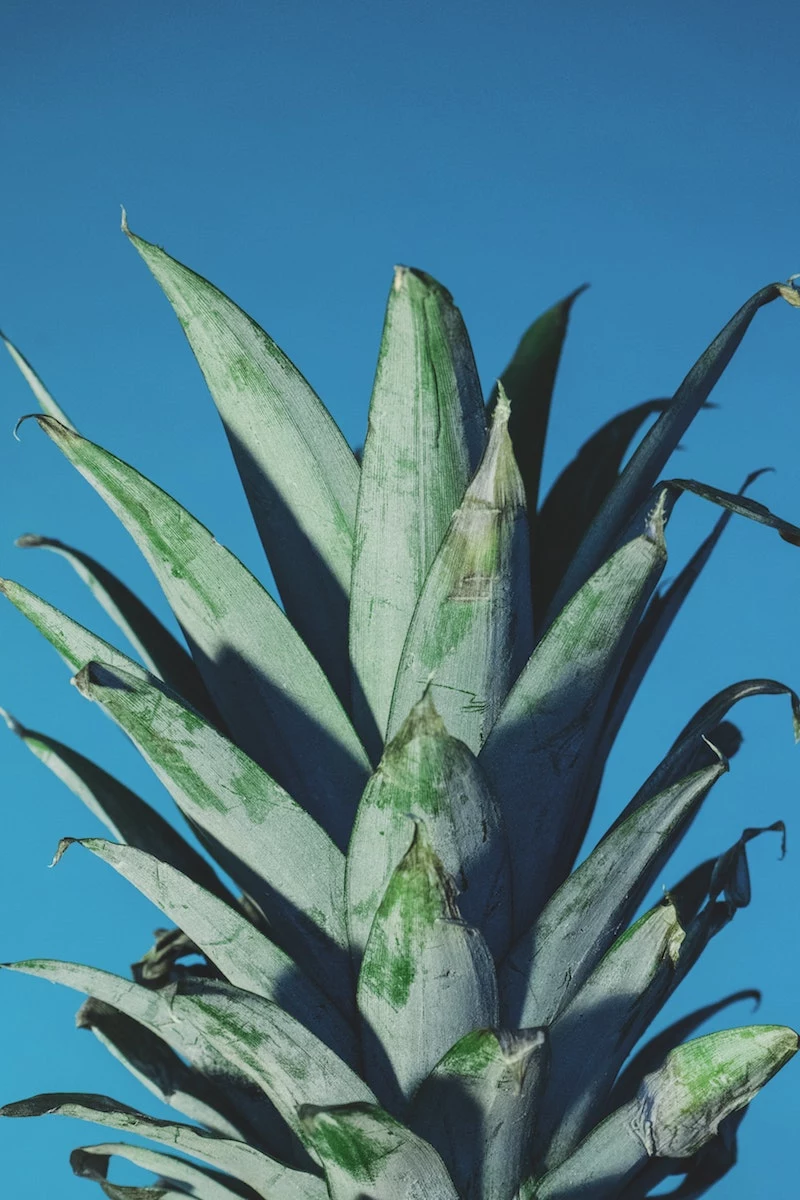
- Prevents water-logging and root rot.
- Provides a stable, heavy base that won’t tip as the plant grows tall.
- Allows soil to breathe, mimicking its natural tropical environment.
The secret? A simple, unglazed terracotta pot. Its porous nature is perfect for growing pineapples, which hate ‘wet feet.’ Pair it with a fast-draining soil, like Espoma’s Cactus Mix, for the best results.

Your pineapple’s best friend is your nose. Forget thumping or pulling on leaves. The most reliable sign of ripeness is a sweet, fragrant pineapple scent at the base of the fruit. If it smells like a tropical vacation, it’s ready. No smell? It needs more time. A fermented, vinegary smell? It’s overripe.

A critical mistake: Planting the crown immediately after twisting it off. This often leads to rot and failure. Let the crown air-dry on a counter for two to three days before placing it in water or soil. This allows the ‘wound’ at the base to callous over, creating a protective barrier that prevents deadly rot and encourages strong root growth.
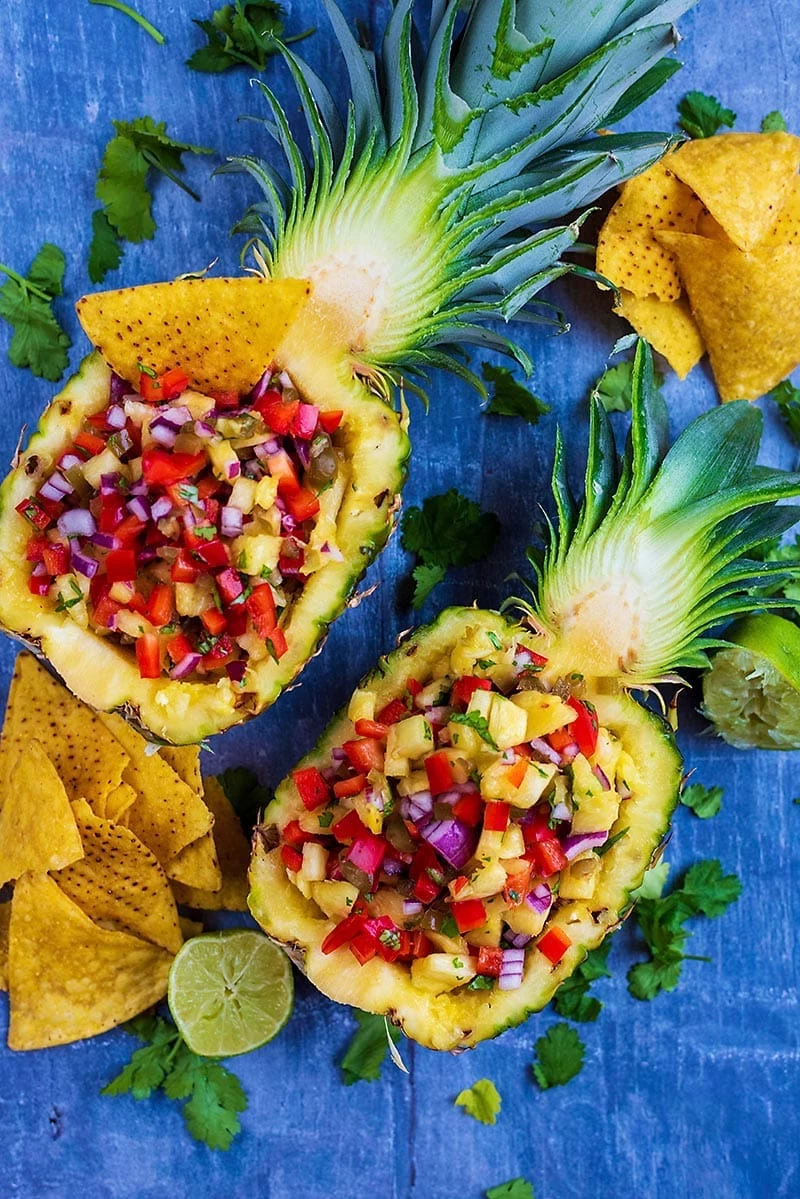
Once you’ve planted your pineapple top, patience is key. The journey from crown to fruit is a slow and rewarding one. After rooting, the plant will spend its first year or more establishing its beautiful rosette of leaves.
- You might see the first sign of fruit—a small red cone emerging from the center—after about 18-24 months.
- From there, it takes another six months for the fruit to fully develop and ripen.
Growing a pineapple isn’t a project for a single season, but a long-term relationship with a fascinating plant.

- A vibrant, golden-yellow color spreading from the base upwards (some varieties stay green when ripe, so check other signs!).
- Leaves in the crown that are fresh and green. You should be able to pluck one from the center with a firm tug.
- A firm shell that has a slight give when squeezed gently.
Your checklist for the perfect fruit. Trust these signs over color alone, and you’ll bring home a winner every time.
In today’s currency, a single pineapple in the American colonies could cost the equivalent of $8,000.










